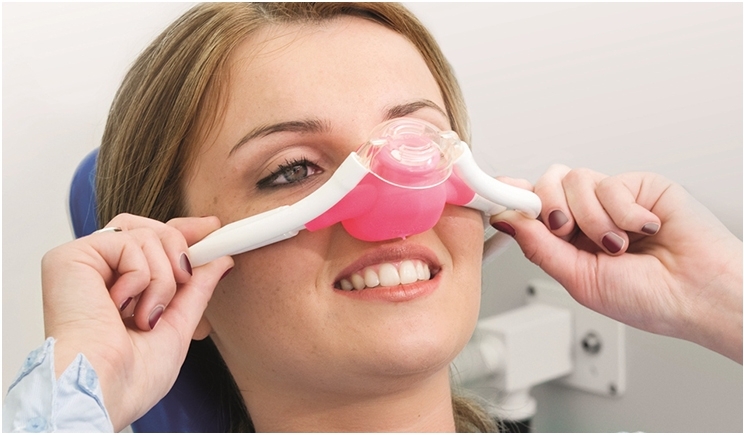
Throughout recorded history, people have looked for innovative solutions for relieving tooth pain. For example, a Babylonian clay tablet from 2250 BC describes a cement made from henbane seed and gum mastic to treat dental cavity pain. We’ve come a long way since then!
Oral health professionals have a wide variety of options available today, from local anesthetics to nitrous oxide analgesia and more. With more options comes a greater responsibility to better educate ourselves and our patients, particularly when it comes to anesthesia and patient safety.
As a board member for a major malpractice insurance company, I review claims against oral and maxillofacial surgeons who use anesthesia in patient care. In virtually every anesthesia-related claim I’ve seen, three factors were in play: inappropriate patient selection, lack of emergency preparedness, and complacency. All of these factors should be addressed prior to scheduling anesthesia.
Proper Patient Selection
First, make sure the patient is healthy enough for the procedure and the anesthetic. For instance, in-office anesthesia may not be safe to administer to patients with sleep apnea. When given anesthesia, patients generally get sleepy, which may cause their tongues to drop back. If a patient has sleep apnea, a blocked airway may result. Give these patients other treatment options, such as local anesthetics or nitrous oxide analgesia.
Proper patient selection starts with patient pre-screening and ends with a face-to-face consultation prior to the scheduled procedure. The pre-screening forms should address the patient’s medical history, any current medications and vitamins that the patient is taking that might interact with the chosen pain reliever, as well as alcohol and tobacco usage, among other factors.
The face-to-face consultation creates an opportunity for you to assess potential problems firsthand and discuss them in detail with the patient before entering the surgical setting. Be sure to review the patient’s medical history and other prescreening forms, answer patient questions, and confirm that the patient is, in fact, healthy enough for the procedure and understands the possible risks and care alternatives.
Also, obtain patient-signed, informed consent documents during the process. This ensures that the patient acknowledges and understands the possible risks and gives full consent to receiving the anesthesia. These signed documents will be important if an adverse effect occurs during or after the procedure.
Be Prepared
Anytime you use anesthesia, be sure there is a good reason to use it and document that reason in as much detail as you can. If there isn’t a good reason, then don’t use it. Period. In addition, make sure you and your staff are properly prepared for any and all possible outcomes and/or emergencies. All staff should be CPR trained and certified, and oral surgeons should be Advanced Cardiac Life Support (ACLS) and Pediatric Advanced Life Support (PALS) trained and certified.
Create daily, weekly, and monthly checklists that you and your staff can use to ensure you always have the right and fully functional equipment on hand and that everyone on staff knows how to use that equipment. Also, make sure you know and adhere to regulations about equipment checks. Laws may vary from state to state. If in doubt or if you just want to be extra zealous, then check all equipment daily. For example, all clocks need to be appropriately set to the correct time, and emergency medicines need to be current and not expired.
Combat Complacency
Implement emergency drills in the office to help ensure more complete training and combat complacency. The American Association of Oral and Maxillofacial Surgeons (AAOMS), the American Dental Society of Anesthesiology, and the ADA have training courses that can be helpful, particularly if you aren’t sure of where to start. AAOMS also has a comprehensive manual, Office Anesthesia Evaluation Manual, 9th Edition.
In addition, AAOMS offers certification courses specifically for dental assistants. Its Dental Anesthesia Assistant National Certification Examination (DAANCE) outlines safe anesthesia techniques. When administering anesthesia in the office, I recommend using the Anesthesia Team Model, as outlined in DAANCE and advocated by the AAOMS.
In the Team Model, at least three people are on the in-office anesthesia team: an oral surgeon, a surgical assistant, and a third person whose sole job is to monitor the patient and the anesthesia being administered. This system provides an extra set of checks and balances to help ensure patient safety.
Dr. Bell is a practicing oral surgeon at Oral Surgery Associates of North Texas, the chief clinical officer of U.S. Oral Surgery Management, and a clinical professor of oral and maxillofacial surgery at Texas A&M College of Dentistry. An active member of the ADA and AAOMS and a fellow of both the American and the International College of Dentists, Dr. Bell has held leadership positions for a number of professional organizations throughout the nation, including former president of the American Board of Oral and Maxillofacial Surgery. Anesthesia and patient safety are areas of special interest to him. He has written numerous articles and lectured extensively on the topic.
Related Articles
The Consequences of the 2019 AAPD Sedation Guidelines
AAP Updates Guidelines for Pediatric Dental Sedation
Sedation Organizations Endorse AAP Pediatric Guidelines











